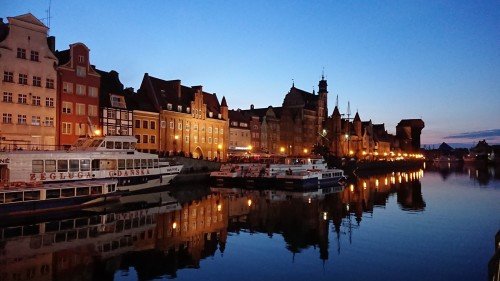
Polish, also known as język polski, is an European language that belongs to the West Slavic branch of Slavic languages. It is the second most widely spoken Slavic language after Russian and is the official language of Poland. Polish is also one of the official languages of the European Union and is spoken by approximately 50 million people worldwide.
History
Polish has a rich and complex history that dates back to the 10th century. It evolved from the Proto-Slavic language and was heavily influenced by Latin, German, and other Slavic languages. The earliest written records of Polish date back to the 11th century and the language has undergone many changes over the centuries.
In the 16th century, the Renaissance brought a revival of the Polish language, which was further strengthened by the establishment of the Polish-Lithuanian Commonwealth. The 18th and 19th centuries saw a strong influence from the German language, which led to a period of linguistic purism and the development of a standardized form of Polish.
Polish was banned during World War II and the communist era that followed, but it experienced a resurgence after the fall of communism in 1989. Today, Polish is a thriving language that continues to evolve and adapt to the changing world.
Alphabet and Pronunciation
Polish uses the Latin alphabet with a few additional letters: ą, ć, ę, ł, ń, ó, ś, ź, and ż. The pronunciation of Polish is relatively simple, with stress usually falling on the second-to-last syllable. Polish has a number of diphthongs, which are combinations of two vowels pronounced in one syllable, and the nasal vowels ą and ę.
Grammar and Vocabulary
Polish grammar is relatively simple, with a relatively free word order. Nouns are declined for case, gender, and number, and verbs are conjugated for tense, mood, and aspect. The vocabulary of Polish is rich and diverse, with many loanwords from other languages, including Latin, German, and French.
Culture and Literature
Polish culture is rich and diverse, with a long history of art, music, and literature. Polish literature is some of the most renowned in Europe, with famous writers such as Adam Mickiewicz, Juliusz Słowacki, and Czesław Miłosz. Polish poetry is especially well-known, with a strong tradition of Romanticism and other literary movements.
Polish music is also rich and diverse, with a strong classical tradition and a thriving popular music scene. Polish folk music is particularly famous, with a strong tradition of polkas, mazurkas, and waltzes.
Conclusion
Polish is a rich and diverse language with a long history and a thriving culture. It is a valuable asset for those who are interested in learning about the history and culture of Central and Eastern Europe, and it is an important language for anyone who wants to expand their linguistic horizons. Whether you are a student of languages, a lover of literature, or just someone who wants to learn a new language, Polish is definitely worth exploring.








